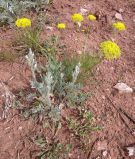
Mertensia lanceolata
In spite of cloudy skies and not-so-distant rumblings of thunder, Mikl and I had another opportunity to ramble among the wildflowers last week. This time, we chose the easy Lichen Loop trail at Heil Ranch, just off Lefhand Canyon Road. It’s amazing how long we can take to walk a mere 1.3 miles! Our excuse was the amazingly rich floristic display brought on by the combination of copious rain and wood ash from the Calwood Fire.
The Cal-Wood Fire started on Oct. 17, 2020, and raced downwind and downslope through Heil Valley Ranch. It consumed 5,000 acres in about five hours. In the end, it covered over 10,000 acres with more than half of that on Boulder County-owned property (4,400 acres) and conservation easements (1,400 acres). Every tree still standing along the Lichen Loop trail was blackened and will ultimately fall (so avoid the area on windy days).

Silky Locoweed
But right now, whole hillsides are clothed in wedding-white Silky Locoweed (Oxytropis sericea) or dainty golden Whiskbroom Parsley (Harbouria trachypleura). The ‘Holy Grail’ I was hoping to find that day was one of the more elusive native Clematis – Sugarbowls (C. hirsutissima). I’ll tell you up front that we didn’t find any there, though there were both Clematis ligusticifolius (Western Virgin’s Bower) and Pulsatilla patens (Pasque flower), a close relative to Clematis that shares its swirling, feathery seed heads. One of the best places to find Sugarbowls is on a portion of the Goshawk trail from Eldorado Canyon to Chautauqua Park.
Some of the flowers we’d never seen there before, probably because they were far less luxuriant in drier years, were the little Scutellaria brittonii (Britton’s Skullcap). They are under 6” tall, and are growing in substantial colonies among the grasses. When you see them up close, you can appreciate their brilliant blue-violet and white coloration and the very cute seed capsules that form. They look like little pillbox hats, one above the other, and when the seeds within are ripe, the box-top lids burst open and propel the seeds a surprising distance.

Whiskbroom Parsley
We’ve seen the bright yellow Whiskbroom Parsley (Harbouria trachypleura) in numerous locations before, but never in such crowds. The showy flat heads of tiny florets wave on slender stems above the finest filigree of bright green foliage. These are frequented by all kinds of tiny native bees, wasps and butterflies.
As we climbed to slightly higher elevations, we also encountered luxuriant colonies of Prairie Bluebells (Mertensia lanceolata}, a member of the Borage family with true-blue nodding flowers and blue-gray foliage. Nearby were fragrant Wallflower (Erysimum asperum), striking magenta Lambert’s Locoweed, and Whiplash Daisy (Erigeron flagellaris), which spreads so readily it can be nuisance in the garden. Bluemist (Foothills) Penstemon (P. virens) was beginning to bloom in many shades of blue, joining Sidebells Penstemon (P. secundiflorus) with its stunning, large orchid-pink blooms stacked up on one side of the stem. We saw some maroon-mauve Pinedrops here and there, parasitic plants with no chlorophyll. And another subtle-colored beauty thriving along the Lichen Loop trail was Downy Paint Cup (Castilleja sessilliflora), with its cream, green and pink tones. On a larger scale, the Boulder Raspberry bushes are in full bloom, with their white flowers that look so much like single white roses.

Native Geranium
Geranium (either caespitosum or viscosissimum) will soon bloom abundantly, and there will be the bright gold and red notes Blanketflower (Gaillardia aristata), then Ratibida columnifera (Prairie Coneflower or Mexican Hat), and a large population of Prickly Poppy (Argemone polyanthemos) with their gorgeous, large crinkled white flowers for many weeks.
Arriving back at the parking lot just as a few raindrops began to fall, there was a lone specimen of Prairie Smoke (Corydalis aurea) hugging the concrete wheel-stop adjacent to ours, which satisfied me as a substitute for the equally elusive Sugarbowl Clematis.
We encourage you to get out there and enjoy our fabulous wildflowers. We are so fortunate to live in such a floristically rich area. Stay on the trails, and bring your Wildflowers of the Rocky Mountain Region book! It’s an indispensable guide, the best one yet, and we have it for sale at Harlequin’s!

Downy Painted Cup

Corydalis aurea

Rubus deliciousus, Boulder Raspberry
